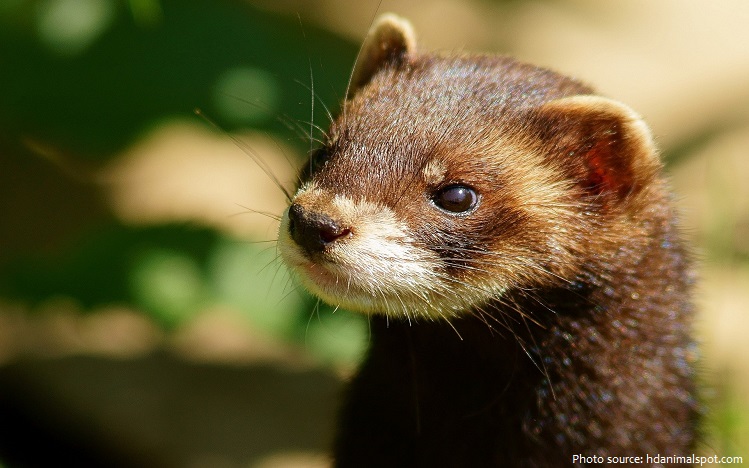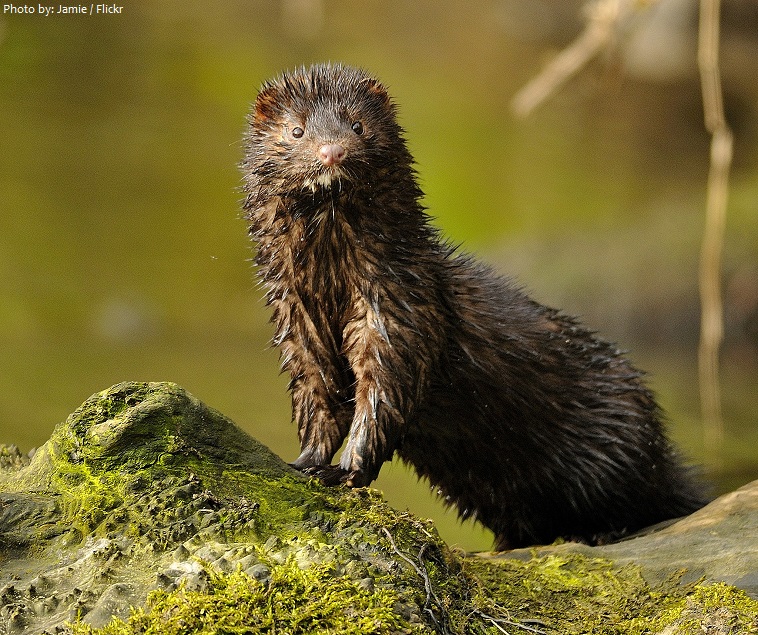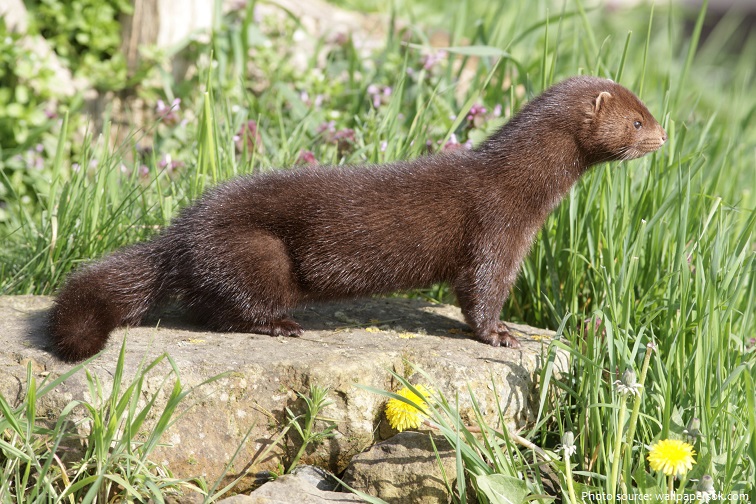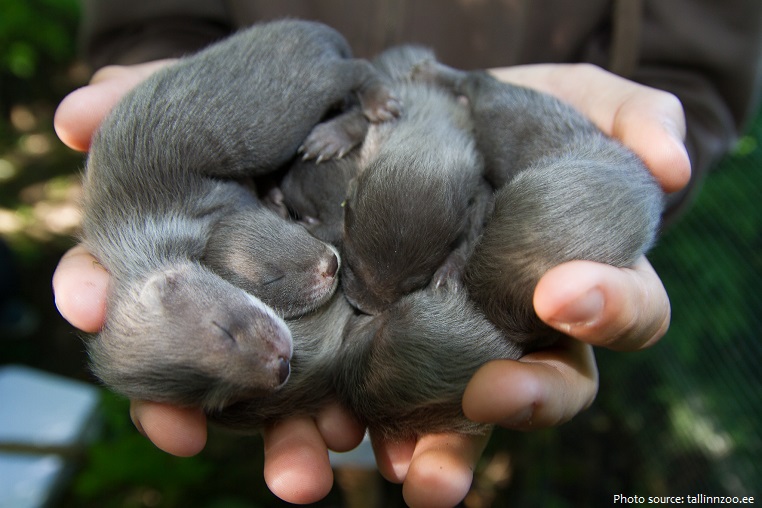The word “mink” is used for the two sole species of these animals still residing on the planet.
These semi-aquatic species are the American mink (Neovison vison) and the European mink (Mustela lutreola).
American mink roam all over both Canada and the United States, although they are nonexistent in a handful of states and regions — think Arizona and Hawaii.
European mink, true to their monikers, live all the way across the pond in nations such as Spain, France and Russia.
Although both types of mink are undeniably similar animals, they have their fair share of individual qualities, too.
The American mink is larger and more adaptable than the European mink but, due to variations in size, an individual mink usually cannot be determined as European or American with certainty without looking at the skeleton.
In the wild, mink are small, discreet, and most often nocturnal, and they live in close proximity to water.
The lifespan of minks is about 3 years in the wild and up to 10 years in captivity.
The male weighs about 1 kg (2.2 lb) and is about 62 cm (24 in) in length. The female weighs about 600 g (1.32 lb) and reaches a length of about 51 cm (20 in). The sizes above do not include the tail which can be from 12.8 centimeters (5.0 in) to 22.8 centimeters (9.0 in).
The body is long and slender with short legs and a pointy, flat face. The toes are partially webbed, showing the mink’s semi-aquatic nature.
A mink’s rich glossy coat in its wild state is brown and looks silky, but farm-bred mink can vary from white to almost black. Their pelage is deep, rich brown, with or without white spots on the underparts, and consists of a slick, dense underfur overlaid with dark, glossy, almost stiff guard hairs.
Mink are very territorial animals. A male mink will not tolerate another male within its territory, but appears to be less aggressive towards females. Generally, the territories of both male and female animals are separate, but a female’s territory may sometimes overlap with that of a male. Very occasionally it may be totally within a male’s.
Minks have excellent senses of vision, smell, and hearing.
A mink can run at speeds up to 13 km/h (8 mph).
Minks are carnivores. The diet of mink varies with the season. During the summer it consists of crayfish and small frogs, along with small mammals such as shrews, rabbits, mice, and muskrats. Fish, ducks and other water fowl provide additional food choices. In the winter, they primarily prey on mammals.
Mink are very territorial animals. A male mink will not tolerate another male within its territory, but appears to be less aggressive towards females. Generally, the territories of both male and female animals are separate, but a female’s territory may sometimes overlap with that of a male.
Mink communicate using a variety of cues, including chemical, visual, and auditory signals. They are fairly quiet, but rely heavily on chemical signaling for communicating territorial boundaries and reproductive status.
The breeding season lasts April to May. Although the true gestation period is 39 days, the embryo may stop developing for a variable period, so that as long as 76 days may elapse before the litter arrives. Between 45 and 52 days is normal. There is only one litter per year. They may have between six and ten cubs or kittens per litter. Young are weaned at about 10 weeks, and begin tracking and capturing prey. Young begin to disperse at about 2.5 to 4 months.
Mink have few natural enemies. They are occasionally killed by coyotes, bobcats and other carnivores, but their main threat remains humans.
These creatures are related to ermines, ferrets and weasels and look much like their relatives.
The main threat towards mink survival is the continued existence of the fur market.
Mink pelts have for years been considered one of the most luxurious furs on the market. Originally all fur came from natural populations, causing a severe strain on the species. However, starting in the mid 1900s, mink ranches were established to help bring a more consistent pelt supply to the market.
However, starting in the mid 1900s, mink ranches were established to help bring a more consistent pelt supply to the market. Ranching was very successful, with the number of mink ranches in the United States reaching a high of 7200 during the mid-1960s.
Mink are kept in captivity primarily for the production of their fur.





